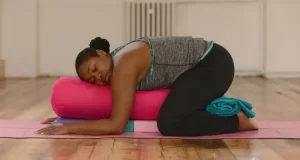In today’s fast-paced world, quality sleep has become a precious commodity. Many individuals struggle with sleep issues, such as insomnia or restless nights, which can have a detrimental impact on overall well-being. While there are numerous sleep aids available, one natural and effective method to promote restful sleep is through the practice of breathing exercises. In this comprehensive guide, we will explore the power of breathing exercises for sleep and provide you with a range of techniques to incorporate into your bedtime routine.
Understanding the Importance of Sleep
Before diving into breathing exercises, it’s essential to grasp the significance of sleep and its impact on our physical and mental health. Quality sleep is crucial for memory consolidation, immune system function, emotional well-being, and overall cognitive performance. By recognizing the benefits of restful sleep, we can appreciate the value of incorporating breathing exercises into our nighttime routine.
The Science Behind Breathing for Sleep
Breathing exercises for sleep work by activating the body’s relaxation response and reducing stress and anxiety, which are common culprits behind sleep disturbances. By regulating our breathing patterns, we can calm the nervous system, slow down the heart rate, and prepare the body for a deep and restorative sleep.
Also Read
Deep Abdominal Breathing
Deep abdominal breathing, also known as diaphragmatic breathing or belly breathing, is a fundamental technique for inducing relaxation and promoting better sleep. By engaging the diaphragm and taking slow, deep breaths, we can signal the body to enter a state of calmness. We will provide step-by-step instructions on how to practice deep abdominal breathing effectively.
4-7-8 Breathing Technique
The 4-7-8 breathing technique is a simple yet powerful exercise that combines deep breathing and breath-holding to promote relaxation and prepare the body for sleep. By following a specific pattern of inhaling, holding the breath, and exhaling, we can induce a sense of tranquility and ease into slumber. We will guide you through the process of mastering the 4-7-8 breathing technique.
Progressive Relaxation Breathing
Progressive relaxation breathing is a technique that combines deep breathing with the systematic relaxation of muscle groups throughout the body. By sequentially tensing and releasing muscles, we can release physical tension and promote a state of calm, making it easier to drift off to sleep. We will explain the steps involved in practicing progressive relaxation breathing.
Mindful Breathing Meditation
Mindful breathing meditation is a practice that involves focusing your attention on the breath while letting go of any distracting thoughts. By cultivating a state of present-moment awareness, we can calm the mind, reduce racing thoughts, and create an ideal mental environment for sleep. We will explore different techniques and variations of mindful breathing meditation for sleep.
Incorporating Breathing Exercises into Your Bedtime Routine
Consistency is key when it comes to reaping the benefits of breathing exercises for sleep. We will discuss practical strategies for incorporating these techniques into your bedtime routine, such as setting aside dedicated practice time, creating a relaxing environment, using guided meditation apps or recordings, and establishing a pre-sleep ritual.
Additional Tips for Better Sleep
In addition to breathing exercises, we will provide supplementary tips to optimize your sleep hygiene and create the ideal conditions for restful sleep. These may include maintaining a consistent sleep schedule, creating a sleep-friendly bedroom environment, limiting exposure to electronic devices before bed, practicing relaxation techniques, and avoiding stimulants close to bedtime.
Conclusion
Breathing exercises offer a natural and accessible approach to promoting restful sleep. By incorporating these techniques into your bedtime routine, you can create a peaceful and calm state of mind, allowing you to drift off into a deep and rejuvenating sleep. Remember, the power of your breath can help unlock the doors to a restful night’s sleep. Embrace it and embrace the potential for a well-rested and energized tomorrow.














